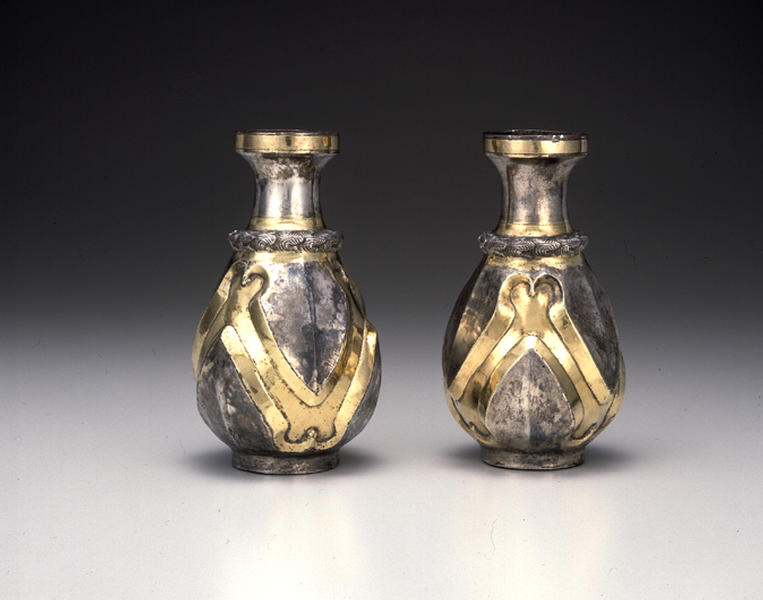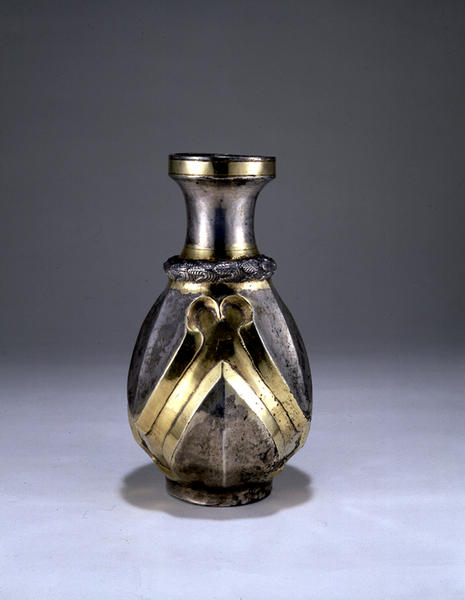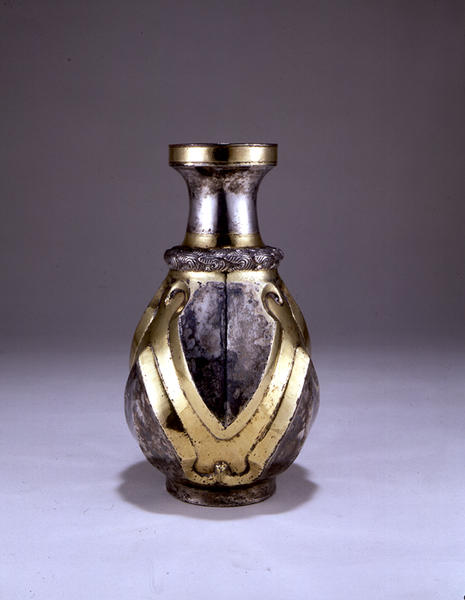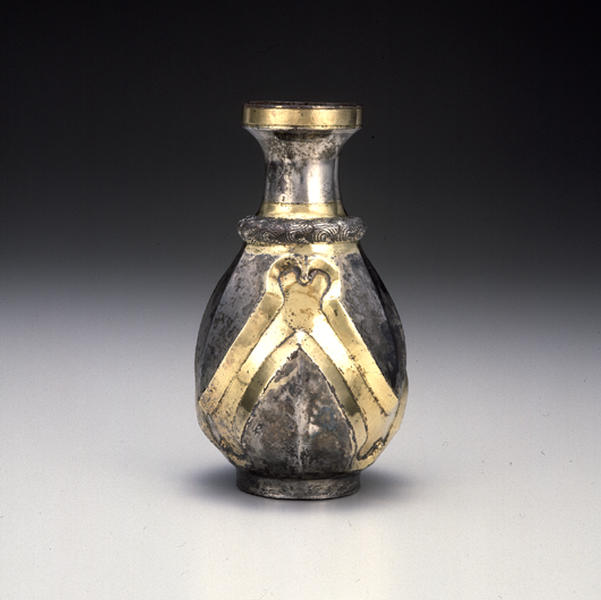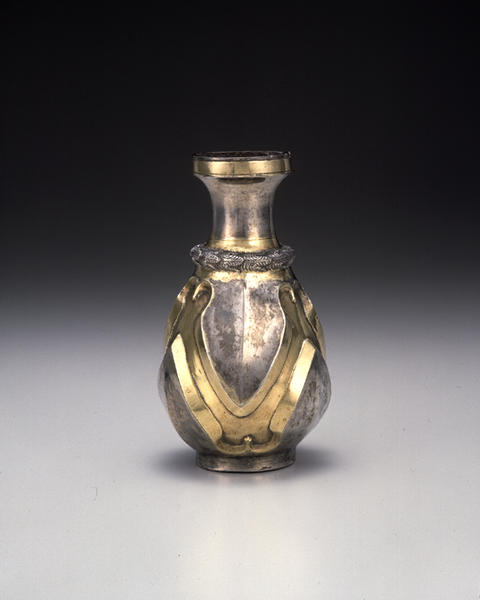Pair of Carafes with Trefoil Pattern
- Iran
- Persia, Sasanian period
- 6-7c
- Parcel gilded silver
- H-17.2
Catalogue Entry
This pair of carafes have low cylindrical feet and pear-shaped bodies, on which combinations of two rows of a trefoil pattern are placed one on top of another with the ridgelines in the center. A band protruding from the narrowed shoulders bear a plant design, probably a grape leaf motif. The upper part of the short neck that extends from the shoulder expands as it moves upward. On top, a low cylindrical mouth has two plain channels cut into the lip horizontally. Gilding is found on the mouth, around the shoulders, and on the broad channel that separates two trefoil.
Carafes of this type a pear-shaped body, a short neck, and a cylindrical mouth are quite prevalent in Sasanian silverware, due probably to an influence from the short neck carafes of early Byzantine Rome. Of interest here is that Roman carafes are adorned with beadwork, also common in Sasanian carafes, and trefoil patterns encircle the narrow necks three-dimensionally, which are equivalent to the grape leaves of many Sasanian carafes. Some Roman carafes have low cylindrical mouths.*1
Two works that are similar to this pair of carafes, with the trefoil pattern enlarged considerably, are known. One is in the Metropolitan Museum of Art, and the other at the Freer Galley of Art in Washington, D.C.*2 Some have hypothesized that this rather sharp angle of trefoil would later lead to the remarkable style of cusps in early Islamic art.*3
